Labrador Retriever - Breed Facts & Characteristics
There is a reason Labrador Retrievers are one of the most popular dogs worldwide. Playful and devoted, they are known for their open, enthusiastic temperaments, which you’ll soon come to adore - as long as you can stand the affection overload, that is. They are smart, too. With a little patience, the Labrador breed trains well. Just keep that plate of food away from the edge of the table.
Official name: Labrador Retriever
Other names: Labrador, Lab
Origins: United Kingdom
Drooling tendencies
4 out of 5Grooming needs
3 out of 5Shedding Level
5 out of 5Barking tendencies
2 out of 5Energy level*
4 out of 5Compatibility with other pets
5 out of 5Warm weather?
3 out of 5Cold weather?
4 out of 5Suited to apartment living
1 out of 5Can stay alone
2 out of 5Family pet?*
4 out of 5
| Male | Female |
|---|---|
| Height | Height |
| 56 - 61 cm | 53 - 58 cm |
| Weight | Weight |
| 30 - 36 kg | 25 - 32 kg |
| Life stages | |
|---|---|
| Puppy | Adult |
| 2 to 15 months | 15 months to 5 years |
| Mature | Senior |
| 5 years to 8+ years | From 8 years |
| Baby | |
| Birth to 2 months | |
Tailored nutrition for your Labrador Retriever
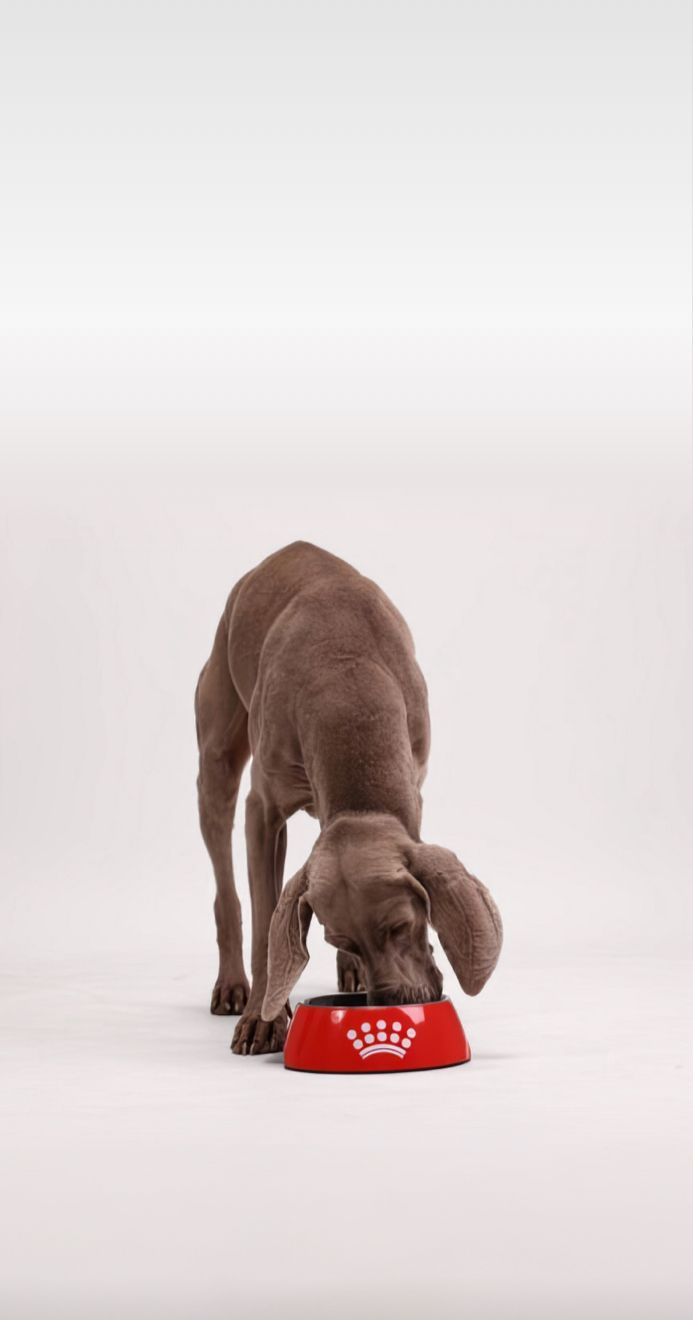
Find the right product for your dog
Answer a few questions about your dog
Get their tailored food recommendation
Support your dog's health with the right diet
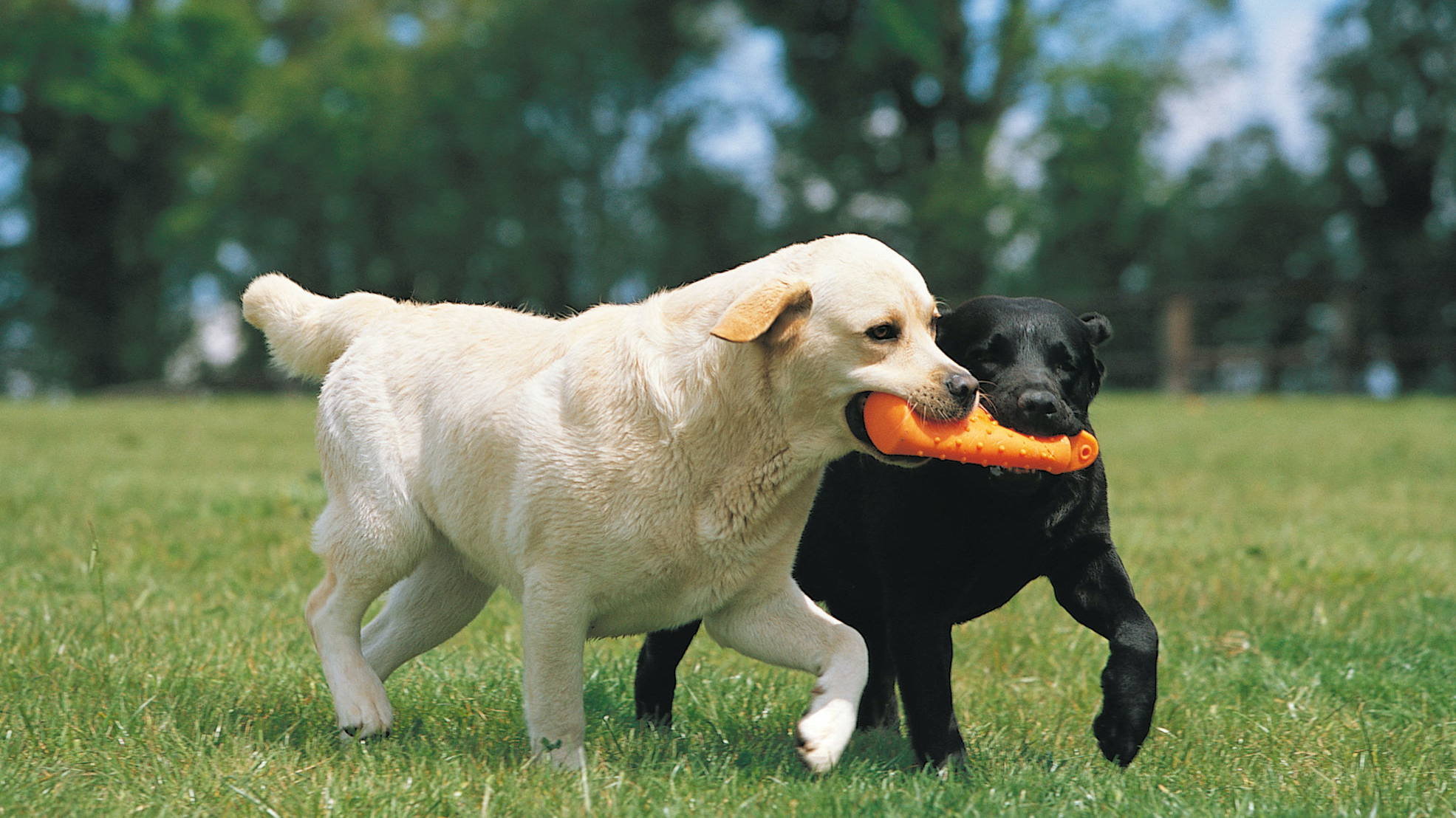
Get to know the Labrador
All you need to know about the breed
Labrador Retrievers are definitely not the dog equivalent of a couch potato. Swimming, playing – did someone say, “Fetch!”? – and long walks with their favourite humans… the Labrador is up for anything and everything. Including training. Training sessions are usually a satisfying endeavour thanks to the breed’s inherent smarts. Balanced and playful, once trained, most Labradors are really great with children. Often trained as therapy dogs, the Labrador’s character traits mean they make for superb service animals. And they have pretty good manners, too.
It’s important to remember that this breed has one fairly big motivator: their appetite. This can make it challenging to maintain a Labrador at a healthy weight, perhaps more so than with other breeds. However, with a balanced, right-for-Labradors diet, plenty of exercise and a good vet, you’ll have yourself a healthy, contented dog.
Quite robust and muscular, they have powerful jaws and a large nose. Their eyes, usually brown or hazelnut-coloured, are full of softness, intelligence and devotion. When a Labrador Retriever looks at its owner, the connection is clear for all to see.
Labradors’ coats are short and thick, without waves or feathering, with a weather-resistant undercoat. You can find the breed in yellow (ranging from light cream to fox-red), brown or all-black. Their tails, often aerobically in movement, are quite thick at birth. Completely covered with dense hair, it gives the Labrador’s tail the appearance of roundness, or what is commonly called an ‘otter tail’. Good advice: when a Labrador is content to see you, don’t stand in the path of its tail!
Known for their friendly, kind temperaments, the Labrador Retriever breed is supremely adaptable to almost any living situation. As a family dog, they will somehow gather the patience to wait for the children to get home from school and excitedly head into the garden to play with them. While a Labrador will bark when it hears strange or loud noises, they don’t make great guard dogs – when well-socialised, they are quite devoid of aggressiveness, bearing no ill will towards man or their fellow pets.

2 facts about Labrador Retrievers
1. Labs live for 2 things: playing and food
And not necessarily in that order. But that’s what training is for. There are plenty of great Labrador puppy training videos on the internet - and great trainers locally. The playing helps keep your Labrador in great shape and prevents him from getting bored. You’ve got this!
2. Staying on top of things
Labrador Retrievers can be prone to certain health concerns, from conditions like hip dysplasia (a reputable breeder will have tested the parents before mating them to help prevent the puppy from having it) to ACL tears - yes, like humans. With recommended exams, a balanced diet and check-ups, most problems can be found early.
History of the breed
There’s a reason Labrador Retrievers are so good on both land and in the water. A direct descendant of the St. John’s Water Dog, named after the capital of the Canadian province of Newfoundland and Labrador, fishermen used these hard-working dogs to help retrieve their nets and fish from the icy waters of this coastal wilderness. The dogs also kept the fishermen company on what was an isolated, massive and surely inhospitable island.
However, the answer to “Where do Labradors come from?” isn’t that straightforward. The breed as we know it today is believed to have been established in Great Britain sometime in the early 1800’s. Adventuring aristocrats and returning fishermen brought the Labrador’s ancestor back to England with them, where the dogs found early fame for their hardy constitutions and loyal dispositions.
The Earl of Malmesbury, a clearly forward-thinking man, took notice and deduced, correctly, that the dogs were well-suited to life on the estate. A breeding program was successfully put in place and it is thanks to the Earl and some of his fellow noblemen that the Labrador Retriever breed exists today. Still as comfortable in the water as they are on land, the Labrador Retriever remains one of the most popular dog breeds in the world.
From head to tail
Physical characteristics of Labrador Retrievers
1.Ears
2.Coat
3.Fur
4.Tail
5.Legs and spine
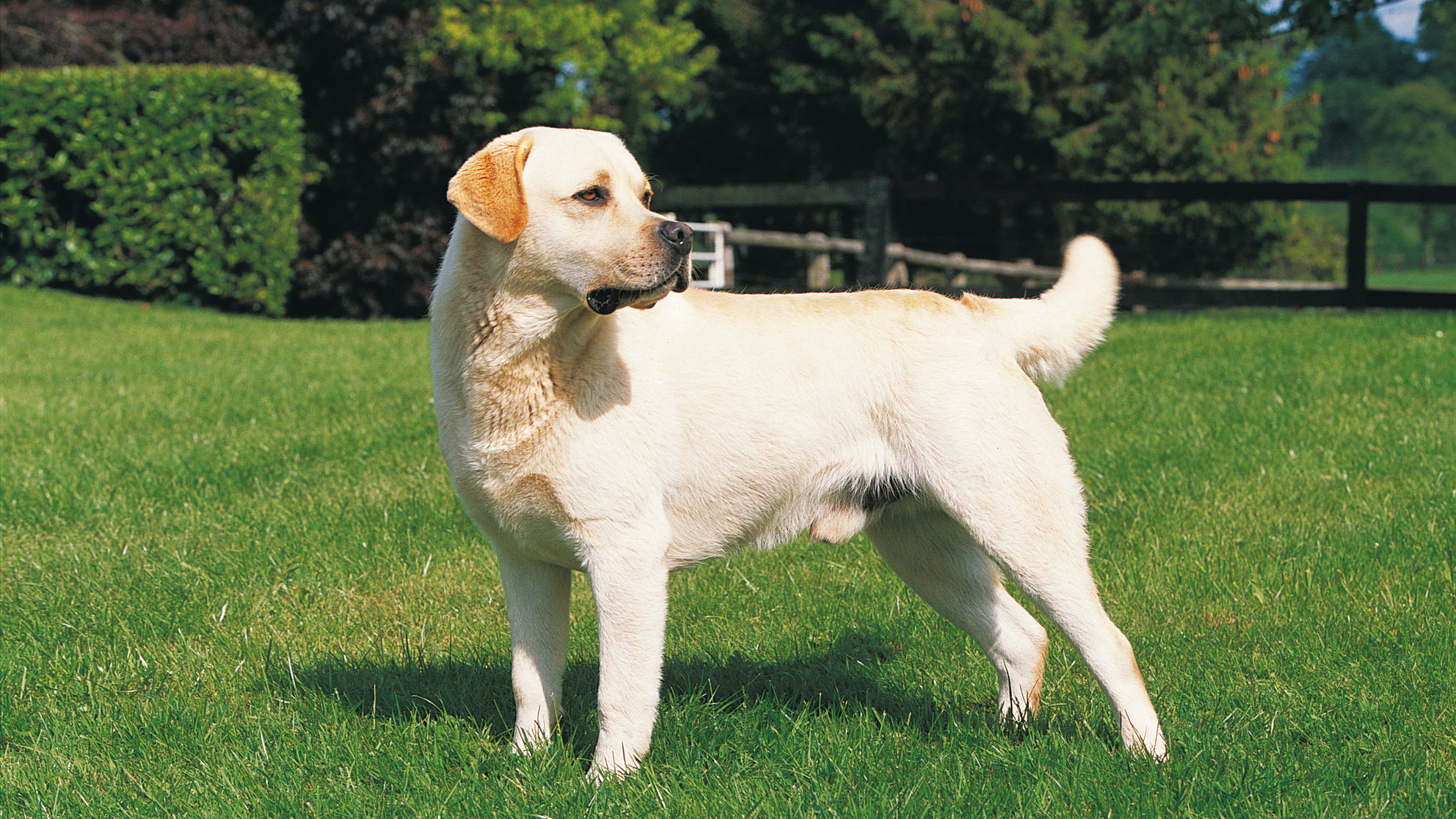
Things to look out for
From specific breed traits to a general health overview, here are some interesting facts about your Labrador Retriever
The Labrador Retriever can be prone to obesity
They are fond of contraband when they can get it! - but our science shows that regular exercise and a balanced diet are Labrador essentials to offset their propensity for obesity. This will also minimise joint problems such as hip or elbow dysplasia, which can lead to malformation of the hips and arthritis as well as related conditions in the elbow. Sometimes painful, dysplasia can reduce the Labradors’ mobility, requiring surgery to fix. The good news? Early detection is key to managing this condition and regular check-ups can help you and your vet stay on top of it.
You know them as ear infections but the medical term is otitis
And Labrador Retrievers can be prone to them. While sometimes linked to lifestyle - activities like swimming, something Labs love to do, even if only waddling through deep puddles - one of the reasons Labradors are more likely to get recurring ear infections is because their pinna, the large exterior part of the ear, blocks the free circulation of air – so moisture can get trapped in the ear canal. The pain, itchy, smelly ears, and possible hearing loss that can accompany otitis can be averted much of the time with exams twice a year. But don’t stress, your vet knows this and can catch anything unusual early on and treat it.
They can also be prone to ligament tears
Cruciate ligaments are the muscles that hold the knee joints together. If they tear, it can be very painful for a dog as it allows their knee joints to slide back and forth. This is the most common orthopaedic injury in active dogs that have a straight up and down hind leg structure like the Labrador Retriever. Luckily, it is fairly straightforward to spot issues before they appear with twice yearly orthopaedic exams.
Your vet may also discuss your Labrador’s weight management as a preventive measure. These simple tools can help you stay on top of potential problems.
Healthy diet, healthier dog
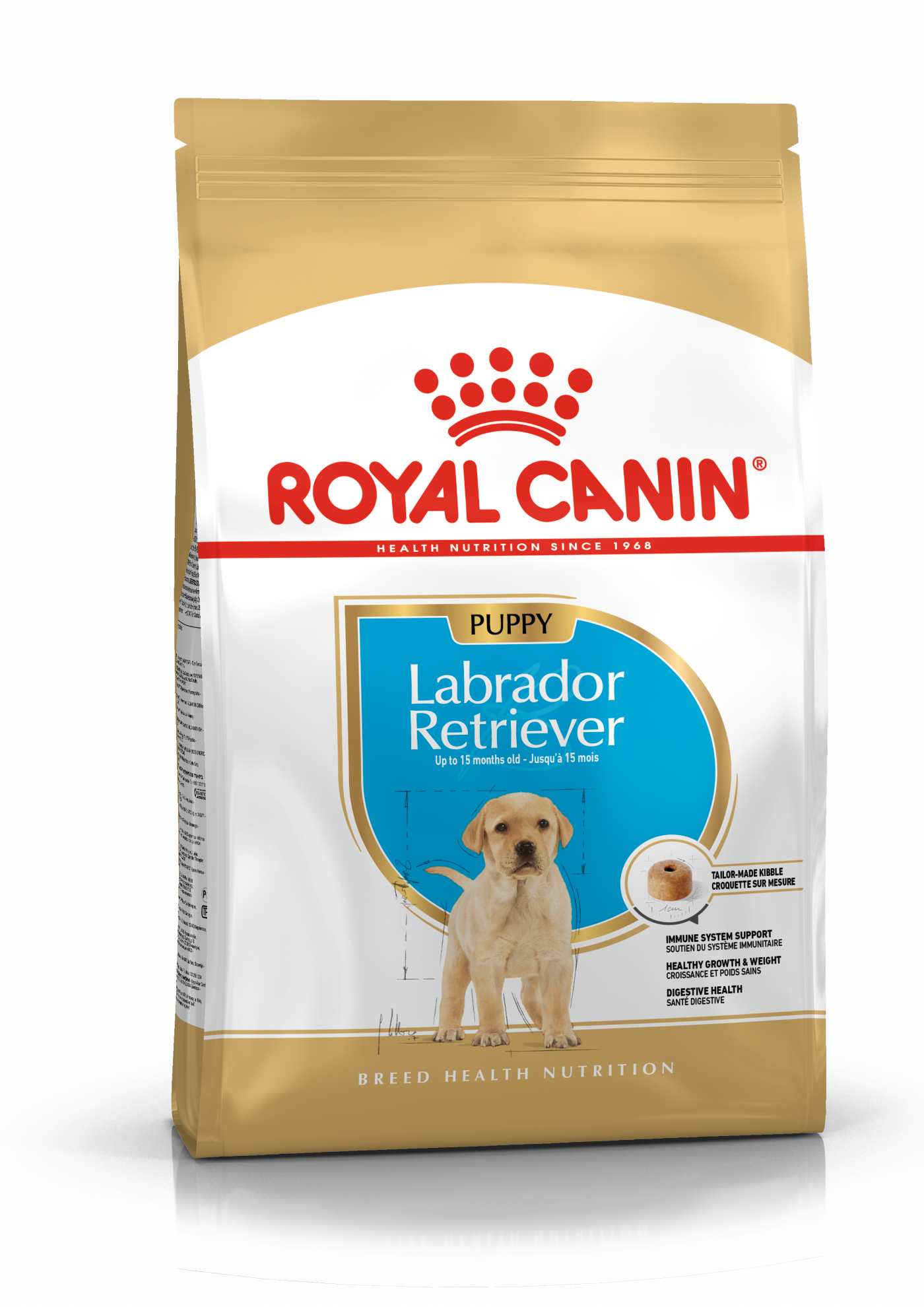
When choosing food for a Labrador Retriever, there are many factors to consider: their age, lifestyle, activity level, physiological condition, and health including potential sickness or sensitivities. Food provides energy to cover a dog’s vital functions, and a complete nutritional formula should contain an adjusted balance of nutrients to avoid any deficiency or excess in their diet, both of which could have adverse effects on the dog.
A Labrador Retriever puppy’s requirements, in terms of energy, protein, minerals and vitamins, are much greater than those of an adult dog. They need energy and nutrients to maintain their body, but also to grow and build it. Until they are 15 months old, Labrador Retriever puppies’ immune system develops gradually. A complex of antioxidants - including vitamin E - can help support their natural defences during this time of big changes, discoveries, and new encounters. Their digestive functions are different from an adult Labrador Retriever’s, too: their digestive system is not mature yet so it is important to provide highly digestible proteins that will be effectively used. Prebiotics, such as fructo-oligosaccharides (FOS), support digestive health by helping balance the intestinal flora, resulting in good stool quality.
It is important to choose a kibble with an appropriate size, shape, and texture to make it easier for them to grasp with their teeth and eat. This growth phase also means moderate energy needs. Large-breed puppies, such as Labrador Retriever puppies, whose growth period is long and intense, are especially susceptible to skeletal and joint problems, including limb defects, bone deformities, and joint lesions. The first part of growth is mainly concerned with bone development, although the muscles also start to grow. Limiting the energy concentration of a food for Labrador Retriever puppies and feeding a correct daily amount will help control the speed of growth and minimise the risk of excess weight. Neutering is a factor in overweight dogs.
Concentrations of other nutrients should be higher than normal in a specially formulated growth food. Although the calcium content in the food needs to be increased, large-breed puppies are more sensitive to excessive calcium intake. It’s important to understand then that adding any ingredients to a complete food formulated for the growth phase is at best unnecessary and at worst dangerous for the animal, unless prescribed by a veterinarian. It is recommended to split the daily allowance into three meals a day until they are 6 months old, then to switch to two meals per day.
Throughout their life, it is important to avoid feeding Labrador Retrievers human foods or fatty snacks. Instead, reward them with kibble taken from their daily meal allowance, and strictly follow the feeding guidelines written on the package in order to prevent excessive weight gain.
Text Item 1
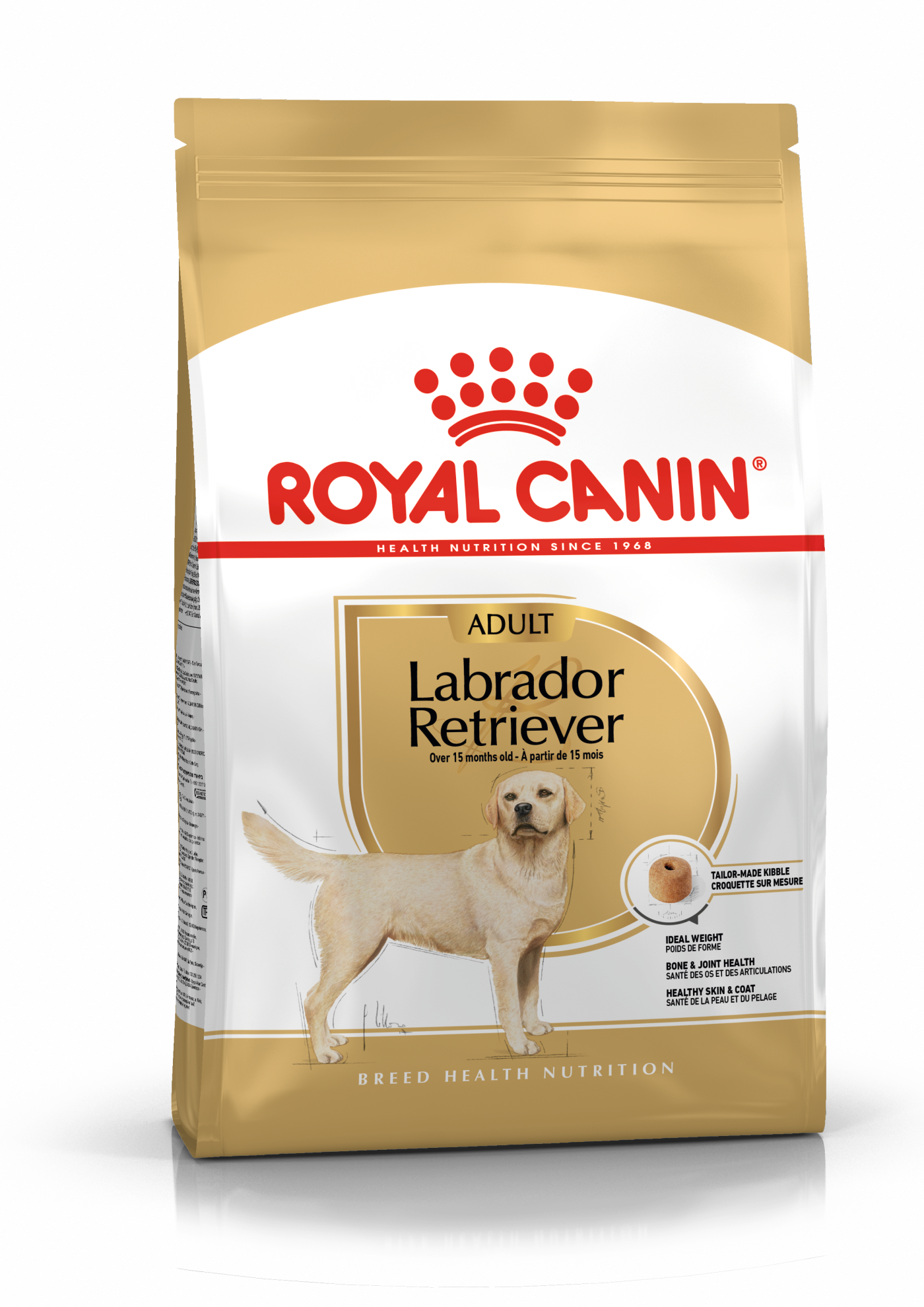
The main nutritional goals for adult Labrador Retrievers are:
Maintaining an ideal body weight with an adapted calorie content, an increased protein level, and L-carnitine involved in healthy fat metabolism. Labrador Retrievers are well known for being greedy and for their tendency to gain weight. A specially designed kibble shape can also help reduce the rate at which they eat.
Helping to support the health of their bones and joints with glucosamine, chondroitin, antioxidants, and EPA-DHA.
Helping to preserve the health and beauty of the skin and coat with the enriched provision of essential fatty acids (especially EPA-DHA), essential amino acids and B vitamins in order to support the skin’s “barrier” function
Promoting optimal digestibility with high quality protein and a balanced supply of dietary fibre.
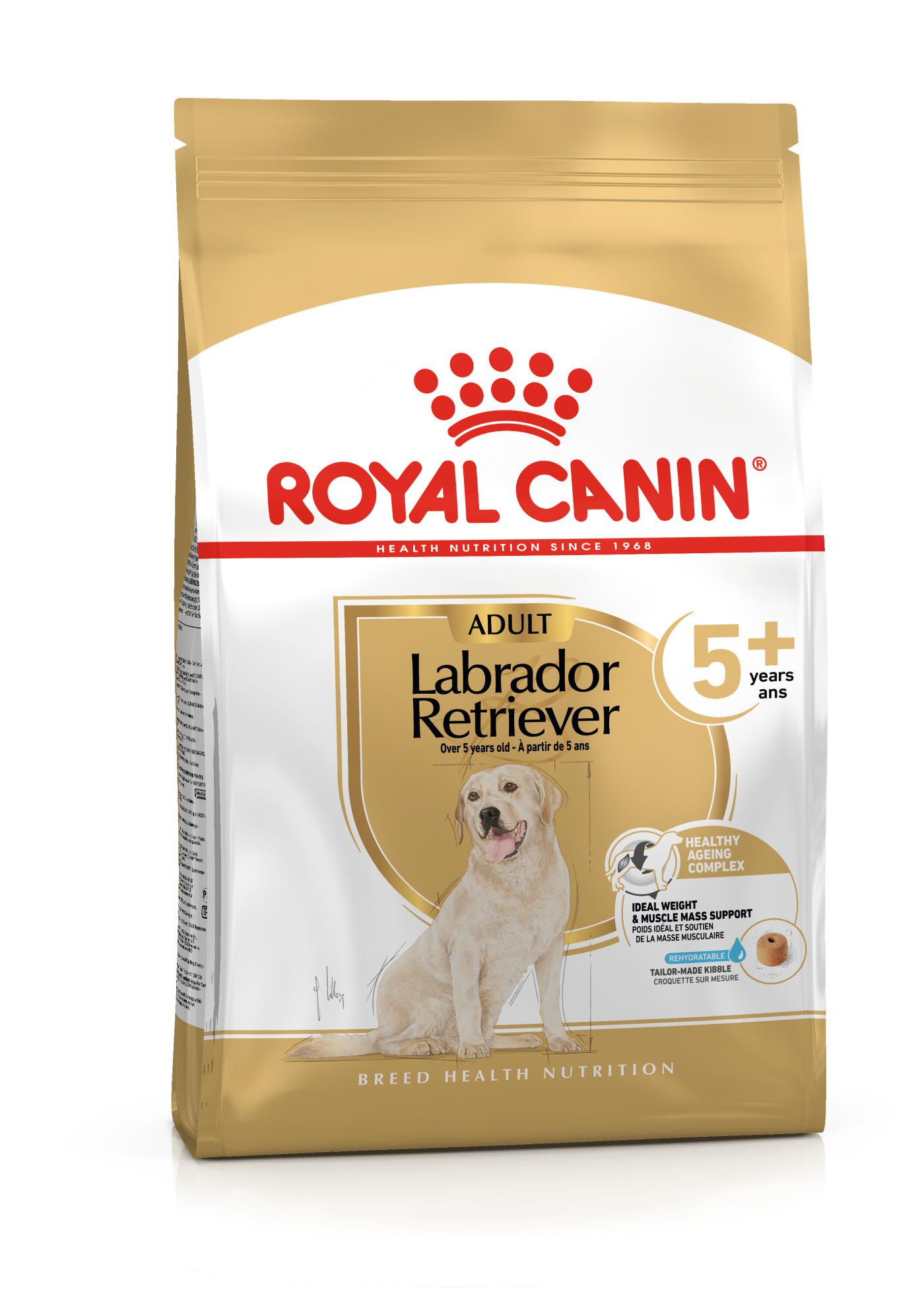
After 5 years old, Labrador Retrievers will start facing the first signs of ageing. A formula enriched with antioxidants will help maintain their vitality, and specific nutrients, such as chondroitin and glucosamine, will help support healthy bones and joints. Ageing is also accompanied by the modification of digestive capacities and particular nutritional requirements, so food for older Labrador Retrievers should have the following characteristics:
An adapted fat and calorie content to help maintain an ideal weight and protein content and L-carnitine to help maintain muscle mass
Higher vitamin C and E content. These nutrients have antioxidant properties, helping to protect the body’s cells against the harmful effects of the oxidative stress linked to ageing
High-quality protein. Contrary to a widely held misconception, lowering the protein content in food brings little benefit in limiting kidney failure. On top of it, older dogs are less efficient at using dietary protein than younger dogs. Reducing the phosphorus content is a good way of slowing down the gradual deterioration of kidney function
A higher proportion of the trace elements iron, copper, zinc, and manganese to help maintain good condition of the skin and coat.
A higher quantity of polyunsaturated fatty acids (omega-3 and omega-6 fatty acids) to maintain the quality of the coat. Dogs can normally produce these fatty acids, but ageing can affect this physiological process.
As they age, dogs increasingly suffer from teeth problems. To ensure they continue to eat in sufficient quantities, the size, shape, and texture of their kibble need to be tailored to their jaw. An adapted kibble shape may help reduce the rate of food intake to help your dog maintain a healthy body weight.
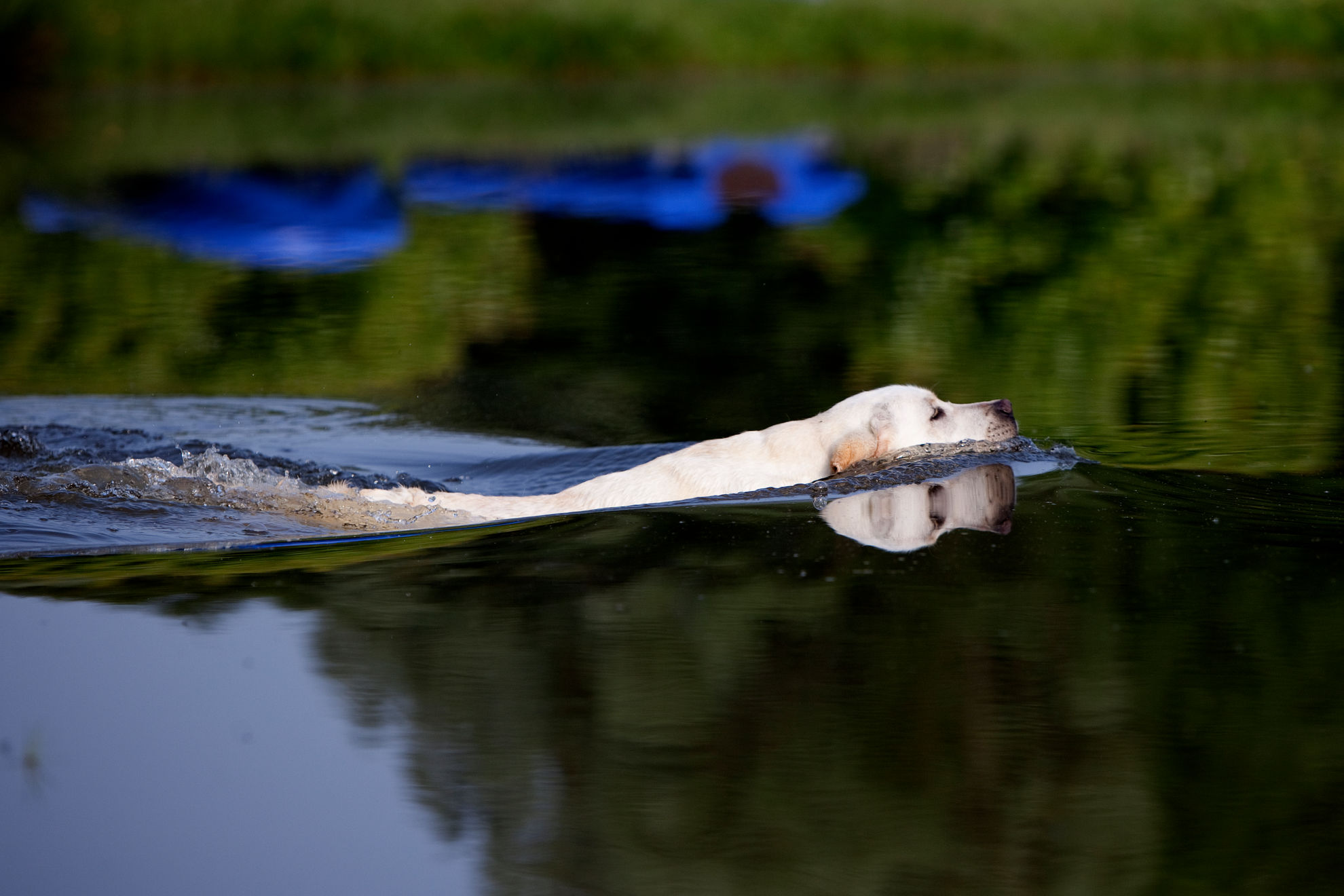
Caring for your Labrador Retriever
Grooming, training and exercise tips
The Labrador Retriever is an exuberant, energetic breed that needs lots of exercise every day. A Labrador who doesn’t get enough activity is likely to engage in hyperactive and even destructive behaviour to release their pent-up energy. The breed’s favourite activities are retrieving things, hence the name, and swimming. The Labrador can be prone to weight gain, but luckily, Labs also love to burn up energy. As you might have deduced, this is not a good breed for the sedentary.
To maintain a healthy, shiny coat, Labrador Retrievers should be brushed weekly, and even more often during seasonal shedding periods. They may need occasional baths to keep them clean, particularly after outdoor activities. And if they were anywhere near a lake or pond! Labradors, like all dogs - and people - need regular dental care, including at-home teeth brushing and professional cleanings. Maintaining good dental hygiene is important for your Lab’s overall long-term health. Nails should be clipped as often as needed and ears checked weekly if they’ll let you.
With the Labrador Retriever’s physical strength and high energy level, early socialisation and puppy training classes are vital. And fun. Gently exposing a Labrador puppy to a wide variety of people, places, and situations between the ages of 7 weeks and 4 months and beginning training early on will help them develop into well-adjusted, well-mannered adults. For the Labrador, puppy training classes are part of the socialisation process and help you, the owner, learn to recognise and correct any bad habits early. Labradors are devoted, intelligent, and enthusiastic companions who, with a little patience, will take to training well and return on time invested with tail-wagging great behaviour.
7/7
All about Labrador Retrievers
In a word, yes. They have double coats and that can mean quite a lot of shedding action for dogs like the Labrador. They shed their coats year-round, but even more in spring and winter. Staying on top of brushing – getting them used to twice a week brushing is a good idea – and grooming will help decrease the amount of dog hair clogging the vacuum each week.
Like any dog, your Labrador Retriever didn’t come into the world knowing all the rules. But they are ready and willing to learn and, with some solid lessons, you or a professional trainer can guide your Labrador puppy to understand what is expected of them. The Labrador temperament is one that innately wants to please, so they’ll pick things up relatively quickly. Early training is essential if you have children in the house, as for any breed.
Other breeds that might interest you
Read more on this topic
Sources
- Veterinary Centers of America https://vcahospitals.com/
- Royal Canin Dog Encyclopaedia. Ed 2010 and 2020
- Banfield Pet Hospital https://www.banfield.com/
Like & share this page